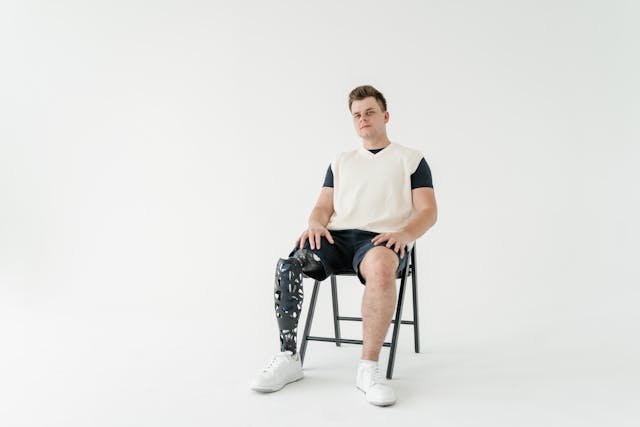When someone goes through an amputation, the path to healing involves more than just physical recovery. One of the most important steps after surgery is prosthetic fitting. In recent years, more people have chosen immediate prosthetic fitting—starting to use a temporary prosthesis soon after surgery. This method has many benefits. It helps maintain muscle strength, improves balance, and speeds up emotional recovery. But for it to work well, it must be done with care.
At Robobionics, we have helped many users across India take their first steps using immediate prosthetics. While early fitting can be a great choice, it needs to be approached in the right way. If not handled properly, it can lead to pain, infection, or other delays. That’s why we focus on following clear best practices at every stage. In this article, we will explore what those best practices are and how they help prevent complications in immediate prosthetic fitting.
Choosing the Right Time to Begin
One of the first and most important decisions is when to start the immediate prosthetic fitting. Starting too early can harm healing, while starting too late can reduce the benefits. The goal is to find the balance between recovery and readiness.
Making Sure the Wound Has Healed Properly
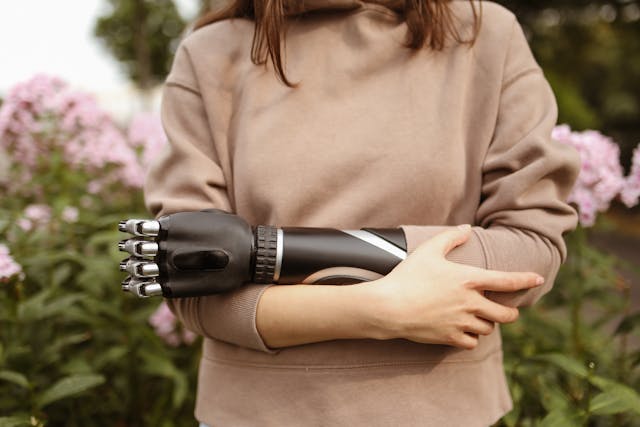
The surgical wound must be clean, closed, and free from infection before any prosthetic fitting begins. If the skin is still open or if there is any drainage, using a prosthetic too soon can increase the risk of complications. It can cause pressure on the wound, which may lead to reopening or infection.
Doctors and prosthetists must check the wound carefully before giving the green light. They may take a few extra days if needed. This short wait can prevent long-term problems. At Robobionics, we work closely with surgical teams to monitor the healing process. Only when the skin is strong enough do we begin prosthetic fitting.
Watching for Swelling and Inflammation
Swelling is natural after surgery, but too much can make prosthetic fitting difficult. A swollen limb may change shape from day to day, making it hard to get a good fit. It can also cause pressure in the wrong areas, leading to pain or skin damage.
The best approach is to wait until swelling has reduced and the limb has started to take a more stable shape. Compression therapy can help speed this process. We use soft liners and compression socks at Robobionics to support healing while preparing the limb for fitting.
Listening to the User’s Readiness
Sometimes the body is ready, but the user is not. Emotional readiness matters just as much. If someone feels too anxious, they may resist movement or hold tension in their body, which can affect how well the prosthetic works. Waiting a few days and giving reassurance can make the first fitting more successful.
Our team at Robobionics makes sure each user feels involved and supported. We answer all questions and help build trust before we move forward with fitting.
Ensuring a Proper Socket Fit From the Start
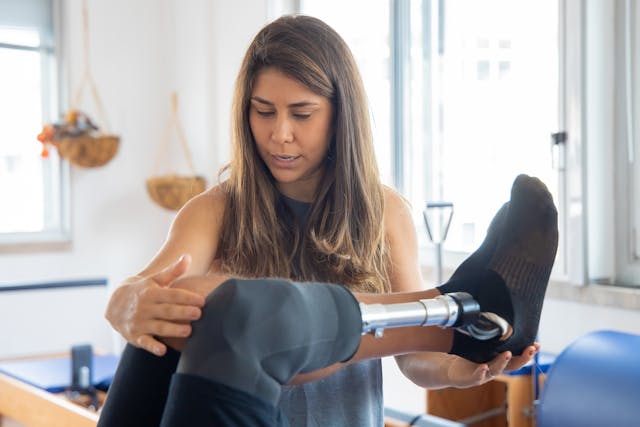
A poor-fitting socket is one of the most common causes of complications in prosthetic use. If it’s too tight, it can cause pressure sores. If it’s too loose, it can lead to instability. Immediate prosthetics require careful socket design to match the limb’s condition.
Measuring the Limb Correctly
Right after surgery, the residual limb is still healing and changing shape. Even small changes in swelling or muscle tone can affect how the socket fits. That’s why it’s important to measure the limb properly every time a socket is made or adjusted.
At Robobionics, we use digital scanners to measure the limb shape accurately. This allows us to make custom sockets that match each user’s needs—even as the limb evolves. We also recheck the fit regularly to make sure no pressure points or gaps develop over time.
Using Soft Liners and Padding
The early limb is fragile. Skin may be thin or tender. To avoid injury, we use soft, medical-grade liners inside the socket. These liners protect the skin from rubbing and help absorb pressure. They also improve comfort, which means the user is more likely to wear the prosthetic longer.
We teach users how to check the liner every day and how to clean it properly. A clean, well-cared-for liner also prevents skin infections and helps maintain hygiene.
Adjusting the Socket as the Limb Changes
In the weeks after surgery, the limb continues to shrink and shape itself. This is a normal part of healing. But it also means that a socket that fits today may not fit next week. Adjustable sockets or replaceable liners help solve this problem.
Robobionics provides modular socket systems with easy adjustment options. Our team also follows up with each user regularly to make sure the fit is still working well. If needed, we reshape or resize the socket quickly to avoid delays or discomfort.
Managing Skin Health and Hygiene During Early Use
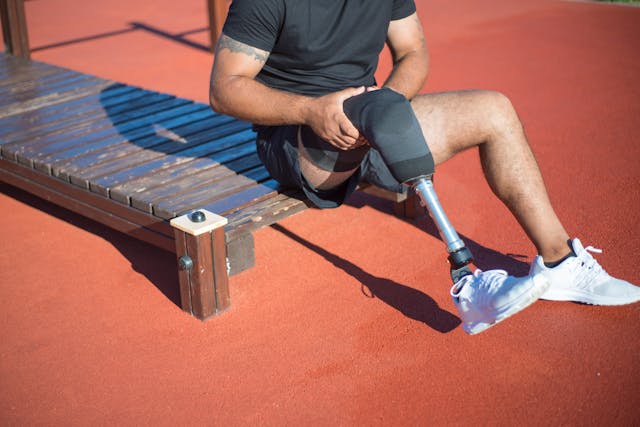
The skin on the residual limb is very sensitive after surgery. It is exposed to new pressures, movement, and contact with prosthetic materials. Without proper care, this can lead to irritation, infection, or even open wounds. Maintaining healthy skin is one of the most important parts of preventing complications during immediate prosthetic fitting.
Keeping the Limb Clean and Dry
Moisture trapped under liners or bandages can cause bacterial growth. This may lead to itching, rashes, or more serious infections if not addressed early. The skin should be washed daily with mild soap and clean water, and then gently dried. No harsh scrubbing is needed. Gentle care keeps the skin clean without causing more sensitivity.
At Robobionics, we show every user how to clean their limb safely and how to recognize early signs of irritation. We also recommend breathable liners that help reduce moisture buildup inside the socket.
Checking for Redness or Pressure Marks
In the early days of wearing a prosthetic, it is common to see mild redness. But if redness stays for too long, spreads, or turns into a sore, it means the socket may be pressing too hard in one area. These pressure points can cause real harm if ignored.
That’s why we teach users and caregivers to remove the prosthetic regularly and check the skin closely. Any unusual marks should be reported. A small adjustment in the socket or liner can often fix the problem before it becomes serious.
At Robobionics, we believe that prevention is always better than treatment. That’s why we offer routine check-ins, both in person and online, to catch any signs of discomfort early.
Avoiding Friction and Skin Breakdown
Rubbing or sliding inside the socket can cause skin to break down. This often happens when the socket doesn’t fit snugly or when liners are not worn properly. Even a small fold in the liner can lead to painful blisters or raw skin.
To prevent this, users should learn how to wear their liners correctly, how to adjust them if needed, and how to take off and put on the prosthetic without damaging the skin. A few minutes of daily care makes a big difference.
Robobionics provides training for every user and caregiver on how to handle the prosthetic gently and correctly. We also offer skin-friendly accessories and products that protect and strengthen the skin during early use.
Guiding Movement, Balance, and Activity Safely
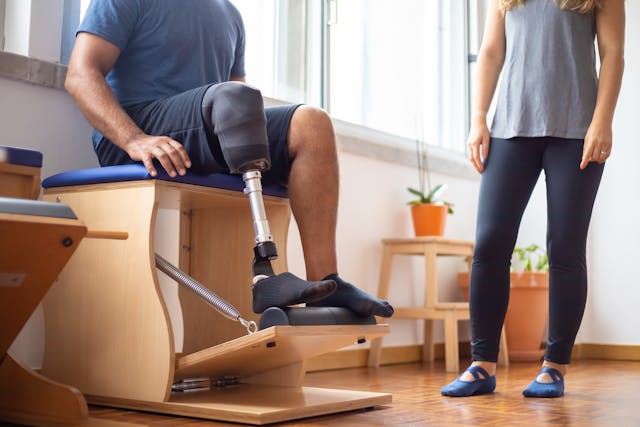
Once a user begins wearing an immediate prosthetic, movement becomes an important part of the recovery journey. But this stage must be handled with care. If someone moves too much, too quickly, or with poor technique, it can lead to complications like falls, joint pain, or muscle fatigue. Safe and guided physical activity is key to preventing these issues.
Teaching Basic Balance and Weight Shifting
Standing and walking with a new prosthetic changes how the body balances. The brain and muscles must learn to share weight differently, and the user must become familiar with a new center of gravity. If this balance is not developed slowly and with proper support, it can lead to stumbles or strain on the joints.
Physical therapy work closely with users to teach safe weight shifting and balance exercises. These movements begin with parallel bars or handrails and gradually move to independent standing. Each session builds strength and coordination without risking injury.
At Robobionics, we include balance training as part of our early rehabilitation support. Our therapists help users build control step by step, giving them the tools to feel safe as they learn to move again.
Preventing Falls Through Proper Training
Falls are one of the biggest risks during early prosthetic use. They often happen because of poor balance, weak muscles, or sudden movements. Falling can cause injuries to the healing limb, other parts of the body, or the prosthetic itself.
That’s why proper walking technique and fall prevention training are essential from the start. Users learn how to walk with assistive devices, how to control their steps, and how to sit or stand without losing balance. They are also taught how to recover safely if they start to fall.
Robobionics ensures every user receives this kind of training, even before they start using their prosthetic full-time. We also teach caregivers how to offer support without adding pressure or risking injury themselves.
Pacing Activity to Avoid Overuse
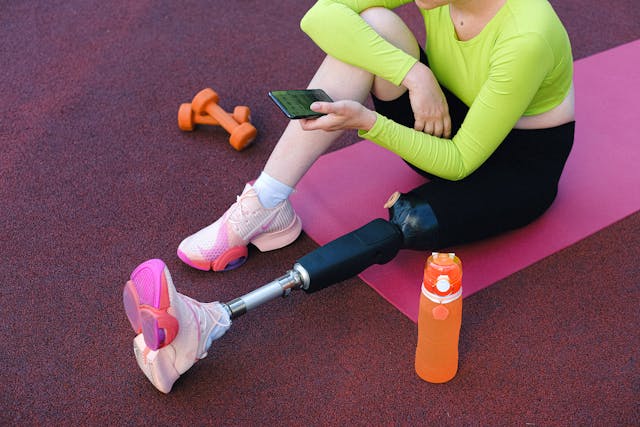
A common mistake during early fitting is doing too much too soon. Many users feel excited or eager to walk, but the body is still healing. If someone stands or walks for long periods before their muscles are ready, it can lead to swelling, pain, or fatigue.
Physical therapy help users build endurance slowly. They set clear limits for walking and standing times, which increase as strength and comfort grow. Rest is just as important as movement during this stage.
At Robobionics, we follow each user’s daily activity closely. Our team creates a schedule that balances exercise, rest, and recovery to make sure progress continues without setbacks.
Following Up Regularly and Monitoring Progress Closely
Even with the best fitting and training, recovery is not a straight line. The body keeps changing, and each user responds differently to movement and pressure. That’s why regular follow-ups, open communication, and clear monitoring are critical. They help identify small problems early—before they become serious complications.
Scheduling Routine Check-Ins with the Prosthetist
A prosthetic that fits well in the first week may not fit as well a few weeks later. The limb may shrink, harden, or change shape as healing continues. If the socket isn’t updated to match these changes, users may feel pain, instability, or discomfort. This is why scheduled visits with the prosthetist are necessary.
During each visit, the prosthetist checks for pressure points, reviews limb shape, and makes sure the prosthetic is functioning as it should. These sessions also give the user a chance to share how the prosthetic feels during daily life.
At Robobionics, we schedule routine follow-ups for every user in the first few months. We track their progress, listen to their feedback, and make proactive changes to ensure comfort and safety at every stage.
Tracking Limb Health and Skin Condition
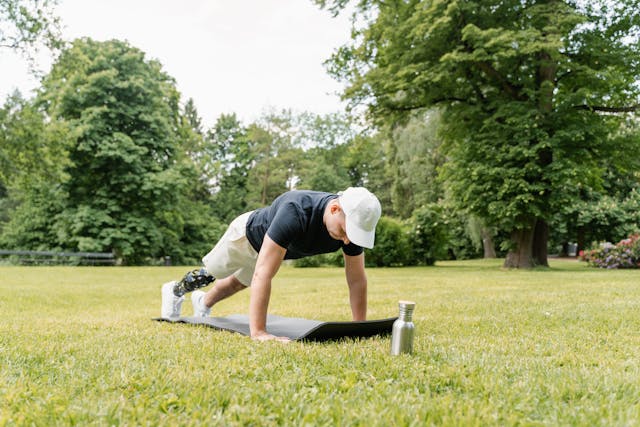
A healthy limb is key to a successful prosthetic experience. Any signs of irritation, swelling, or redness should be recorded and watched closely. Users can take daily photos or use simple logs to keep track of changes. This helps the care team spot patterns and respond quickly to potential issues.
Monitoring also includes skin temperature, color, and sensitivity. These small details often reveal early warning signs that a socket may need to be adjusted or that an infection might be starting.
Robobionics provides each user with a simple home care guide to support daily monitoring. We encourage users to contact us if they notice anything unusual, even if it seems small.
Keeping Communication Open with the Care Team
Recovery is a shared effort between the user, prosthetist, physiotherapist, surgeon, and family. For it to go smoothly, communication must be clear and frequent. When users feel comfortable reporting pain, asking questions, or sharing concerns, the care team can respond faster and more effectively.
Caregivers and family members also play a role. They can help track symptoms, assist with exercises, and support users during emotional ups and downs. When everyone works together, the risk of complications drops significantly.
At Robobionics, we believe strong communication is the heart of good prosthetic care. We make ourselves available through phone, video, and in-person sessions, so every user always feels heard and supported.
Conclusion
Immediate prosthetic fitting can be a powerful step forward in recovery. It offers the chance to move early, build confidence, and stay strong after surgery. But like any medical process, it comes with risks if not done correctly. Preventing complications is not about being lucky—it’s about being prepared. With the right support, the right tools, and the right guidance, most problems can be avoided before they ever begin.
From timing the first fitting carefully, to ensuring a snug but gentle socket fit, to caring for the skin and tracking every small change—each step plays a role. Physical therapy, follow-ups, and daily communication also ensure that the user stays safe, active, and motivated. At every stage, the goal is the same: to create a path where healing and movement go hand in hand.
At Robobionics, we treat each immediate prosthetic fitting as a complete journey—not just a product. We combine medical precision with compassionate care, making sure every user has the tools, knowledge, and support they need to walk forward with strength.
If you’re planning for immediate prosthetic fitting or want to learn how to avoid the most common risks, contact Robobionics today.



